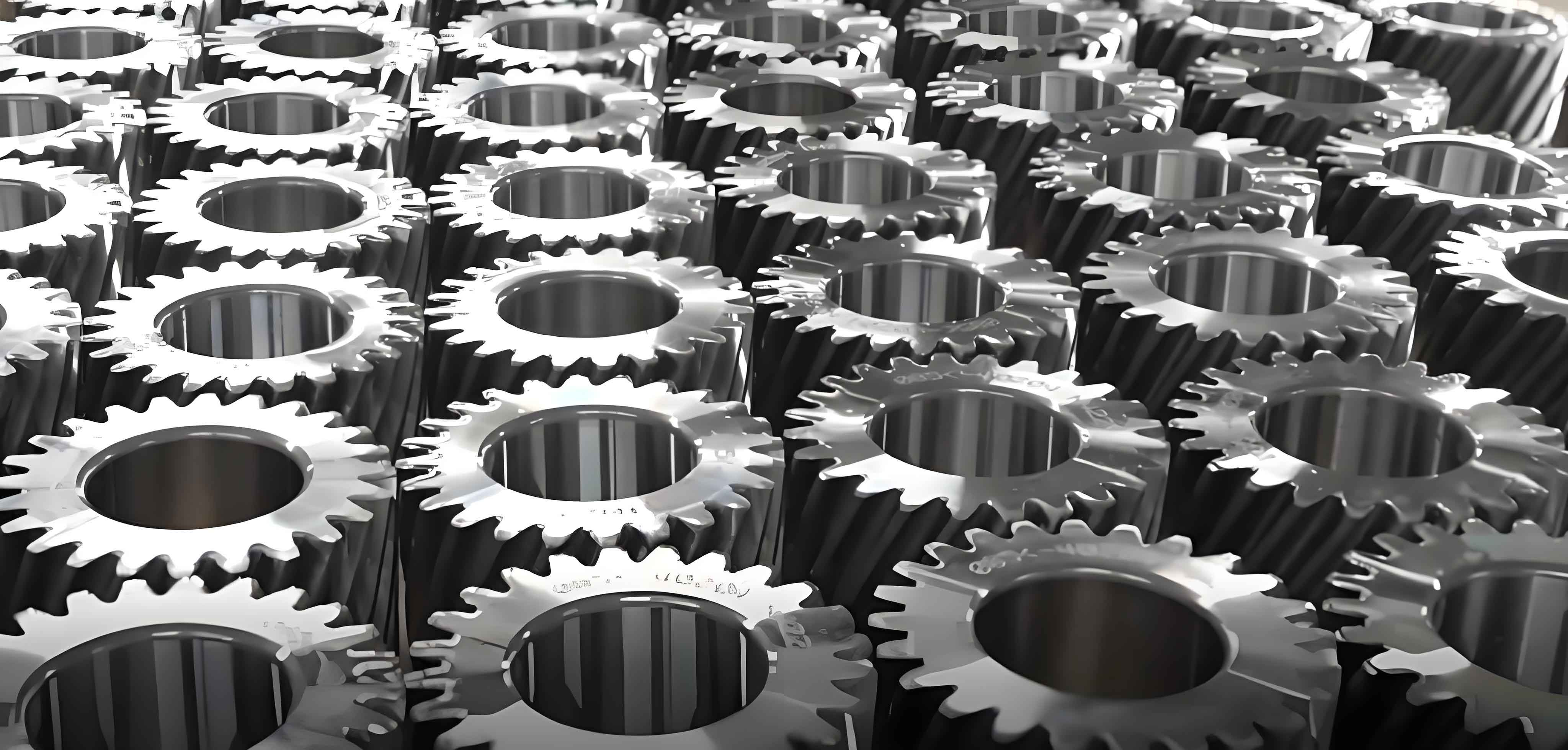
1. Introduction
1.1 Background and Significance
Spur gear is widely used in mechanical transmission systems due to their simplicity, cost-effectiveness, and absence of axial forces. However, high-contact-ratio (HCR) spur gear (contact ratio ε≥2ε≥2) exhibit superior load-bearing capacity compared to low-contact-ratio (LCR) gears (1≤ε<21≤ε<2) by distributing loads across multiple meshing teeth. Despite this advantage, HCR spur gear face increased risks of tooth surface scuffing due to elevated sliding velocities and temperature rise. Accurate calculation and measurement of tooth surface temperature are critical for designing HCR spur gear with enhanced scuffing resistance.
1.2 Research Status
1.2.1 Scuffing Research
Scuffing, a sudden adhesive wear phenomenon under high pressure and temperature, has been studied extensively. Key contributions include:
- Blok’s Flash Temperature Theory: Introduced the concept of instantaneous temperature rise at contact points.
- Integral Temperature Method: Winter and Michaelis proposed averaging transient temperatures along the meshing line to evaluate scuffing risks.
- Experimental Standards: FZG and CL-100 gear testers are widely used for scuffing resistance assessment.
1.2.2 HCR Spur Gear
Recent studies focus on HCR spur gear’ load distribution, stiffness, and dynamic behavior. However, research on their thermal characteristics, especially tooth surface temperature, remains limited.
1.3 Research Objectives
This study aims to:
- Analyze load distribution and stiffness of HCR spur gear.
- Develop a theoretical model for tooth surface temperature calculation based on Blok’s theory.
- Validate the model through temperature measurement experiments.
- Investigate the influence of gear parameters and operating conditions on temperature rise.
2. Load Distribution Analysis of HCR Spur Gear
2.1 Meshing Characteristics
HCR spur gear has three distinct meshing zones:
- Three-tooth meshing zones: Near the root and tip regions.
- Two-tooth meshing zones: Intermediate regions.
The dimensionless coordinate system along the meshing line is defined as:ry=tanαytanα′−1ry=tanα′tanαy−1
where αyαy is the pressure angle at any meshing point, and α′α′ is the operating pressure angle.
2.2 Influence of Tooth Parameters on Contact Ratio
Key parameters affecting contact ratio (εε) include:
| Parameter | Impact on εε | Example Trend (Table 2.1 Gear) |
|---|---|---|
| Addendum coefficient (ha∗ha∗) | ε∝ha∗ε∝ha∗ | ha∗≥1.27⇒ε>2ha∗≥1.27⇒ε>2 |
| Pressure angle (αα) | ε∝1/αε∝1/α | α=20∘⇒ε=2.1α=20∘⇒ε=2.1 |
| Number of teeth (ZZ) | ε∝Zε∝Z | Z1=23⇒ε=2.1Z1=23⇒ε=2.1 |
| Profile shift coefficient (xx) | ε∝1/xε∝1/x | x1+x2<0.2⇒ε>2x1+x2<0.2⇒ε>2 |
2.3 Load Sharing Analysis
HCR spur gear exhibit lower single-tooth load-sharing rates compared to LCR gears:
| Meshing Zone | HCR Spur Gear Load Sharing (%) | LCR Spur Gear Load Sharing (%) |
|---|---|---|
| Three-tooth zone | 27.28 (min) | — |
| Two-tooth zone | 59.76 (max) | 100 (single-tooth zone) |
3. Tooth Surface Temperature Calculation
3.1 Blok’s Flash Temperature Theory
The integral temperature (θintθint) combines bulk temperature (θMθM) and averaged flash temperature (θfla,intθfla,int):θint=θM+C2⋅θfla,intθint=θM+C2⋅θfla,int
where C2=1.5C2=1.5 is a weighting factor.
3.2 Key Correction Coefficients
Critical coefficients influencing θfla,intθfla,int include:
| Coefficient | Formula | Impact on Temperature | ||
|---|---|---|---|---|
| Friction (μmcμmc) | μmc=0.045⋅XR⋅XL2⋅ηoil−0.05⋅(XZ⋅ωBt)0.2(vΣP⋅ρredP)μmc=0.045⋅XR⋅XL2⋅ηoil−0.05⋅(vΣP⋅ρredP)(XZ⋅ωBt)0.2 | μmc∝θflaμmc∝θfla | ||
| Pressure angle (XαβXαβ) | Xαβ=1.22⋅sin0.25αt′cos0.5αt′⋅cos0.5αtXαβ=1.22⋅cos0.5αt′⋅cos0.5αtsin0.25αt′ | Xαβ∝1/θflaXαβ∝1/θfla | ||
| Geometric (XBEXBE) | XBE=0.51⋅μ+1⋅XBE=0.51⋅μ+1⋅ | \rho_{E2} | )^{0.25}} ) | XBE∝θflaXBE∝θfla |
3.3 Temperature Distribution Along Meshing Line
- LCR Spur Gear: Maximum temperature occurs at the meshing-in point due to high sliding velocity.
- HCR Spur Gear: Maximum temperature shifts to the transition point between three-tooth and two-tooth zones.
| Gear Type | Max Temperature (°C) | Location |
|---|---|---|
| LCR Spur Gear | 54.28 | Meshing-in point |
| HCR Spur Gear | 56.99 | Three-tooth/two-tooth transition |
4. Experimental Validation
4.1 Test Setup
- Gear Parameters:ParameterHCR Spur GearLCR Spur GearZ1/Z2Z1/Z223/3025/32Module (mm)3.5 mm3.25 mmha∗ha∗1.271.00εε2.11.64
- Measurement: PT100 thermal resistors embedded at tooth root and tip.
4.2 Results and Comparison
| Load Stage | HCR Spur Gear (°C) | Theoretical (°C) | Error (%) | LCR Spur Gear (°C) | Theoretical (°C) | Error (%) |
|---|---|---|---|---|---|---|
| 4 | 72.3 | 69.6 | 3.7 | 66.1 | 66.0 | 0.2 |
| 7 | 80.9 | 90.5 | 11.8 | 80.1 | 82.5 | 3.0 |
| 9 | 96.9 | 112.8 | 16.4 | 84.9 | 100.3 | 18.1 |
- Key Findings:
- Theoretical and experimental results align within 18% error.
- HCR spur gear exhibit higher temperatures than LCR gears under identical loads.
5. Influence Factors on Tooth Surface Temperature
5.1 Tooth Parameters
| Parameter | Impact on HCR Spur Gear | Impact on LCR Spur Gear |
|---|---|---|
| Module (mm) | θ∝1/mθ∝1/m | θ∝1/mθ∝1/m |
| Surface roughness | θ∝Raθ∝Ra | θ∝Raθ∝Ra |
| Addendum coefficient | θ∝ha∗θ∝ha∗ | Minimal impact |
| Pressure angle | θ∝1/αθ∝1/α | θ∝1/αθ∝1/α |
| Profile shift (xx) | θ∝1/xθ∝1/x | θ∝1/xθ∝1/x |
| Number of teeth | θ∝1/Zθ∝1/Z | θ∝1/Zθ∝1/Z |
5.2 Operating Conditions
| Condition | Impact on HCR Spur Gear | Impact on LCR Spur Gear |
|---|---|---|
| Speed (nn) | θ∝nθ∝n | θ∝nθ∝n |
| Torque (TT) | θ∝Tθ∝T | θ∝Tθ∝T |
| Lubricant viscosity | θ∝1/ηθ∝1/η | θ∝1/ηθ∝1/η |
6. Conclusions and Future Work
6.1 Conclusions
- HCR spur gear reduce single-tooth load sharing by 40% compared to LCR gears.
- Maximum temperature in HCR spur gear occurs at three-tooth/two-tooth transition zones.
- Increasing module, pressure angle, or profile shift reduces tooth surface temperature.
- Experimental validation confirms theoretical models with <20% error.
6.2 Future Work
- Multi-parameter optimization for temperature reduction.
- Study of lubricant film thickness effects on scuffing resistance.
- Dynamic analysis of thermal-vibration coupling in HCR spur gear.
